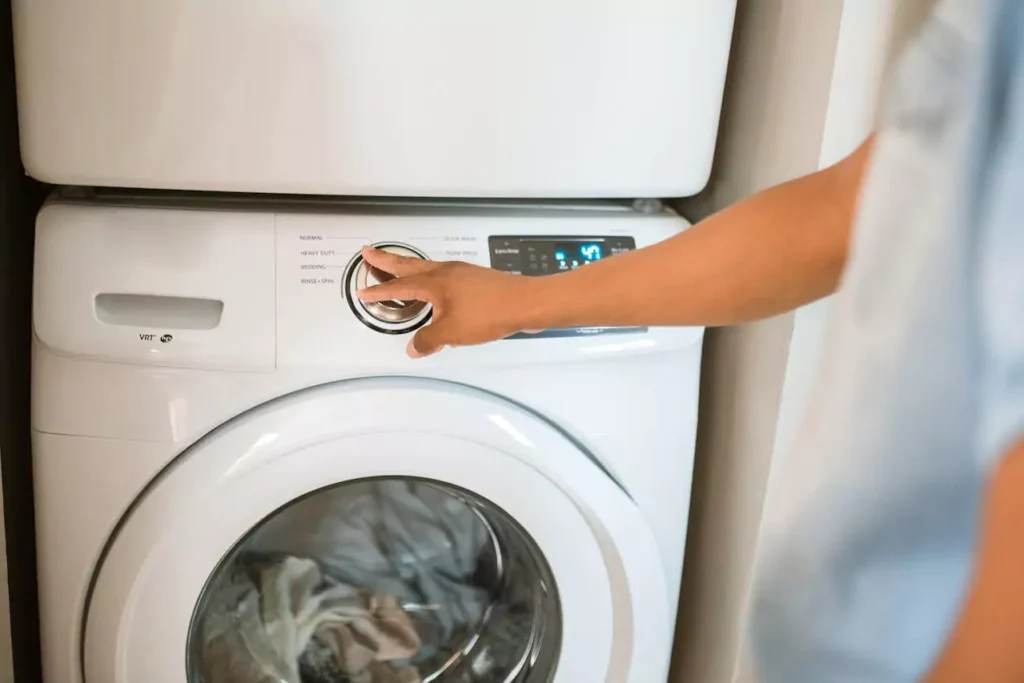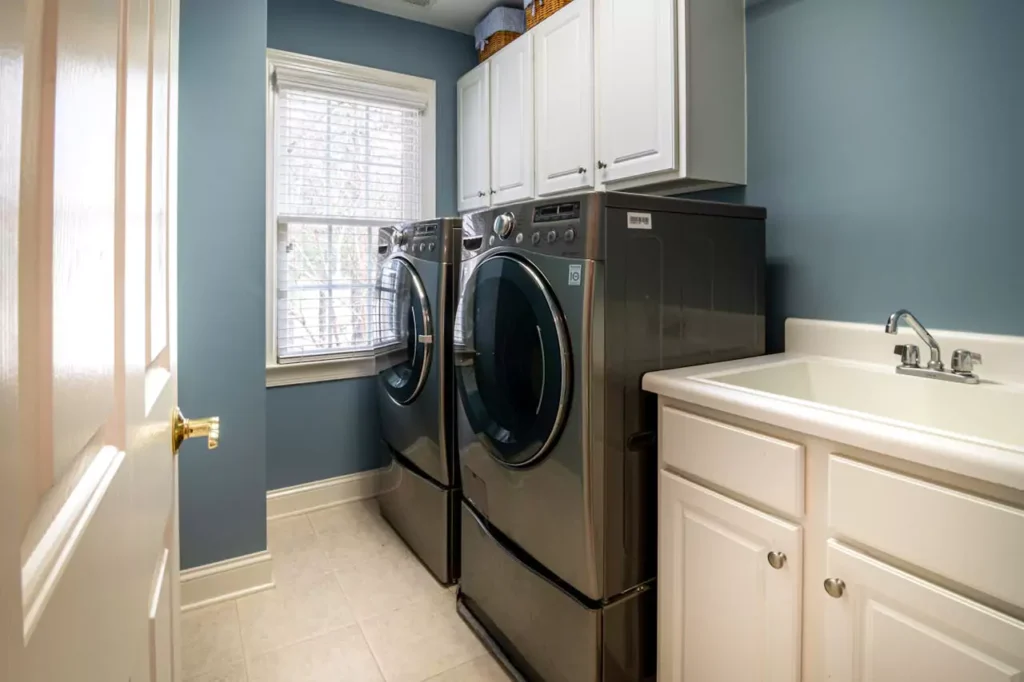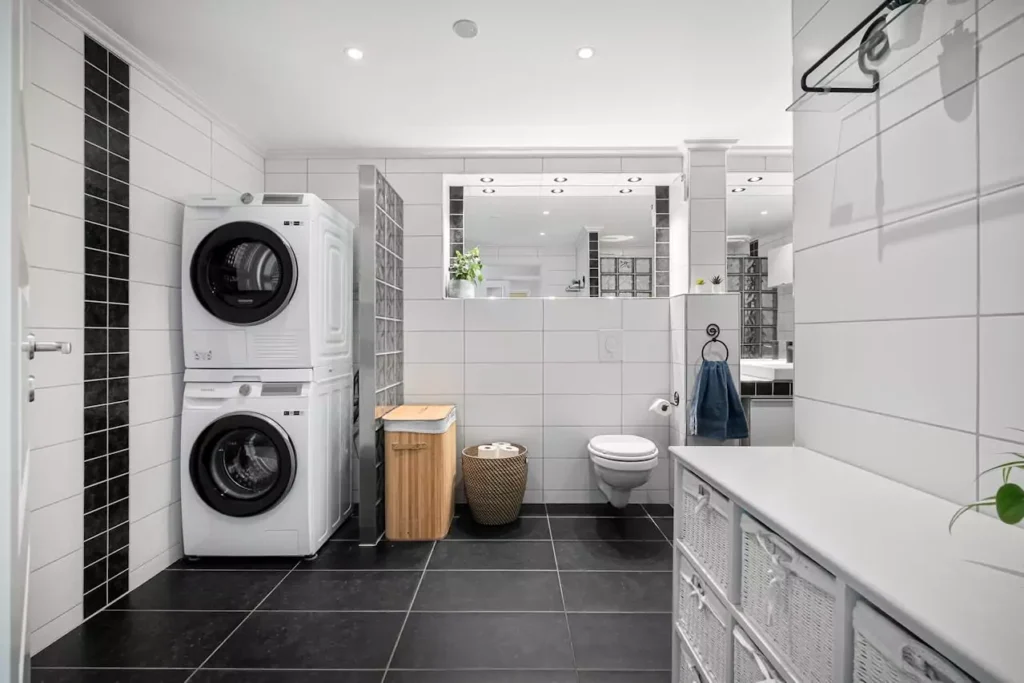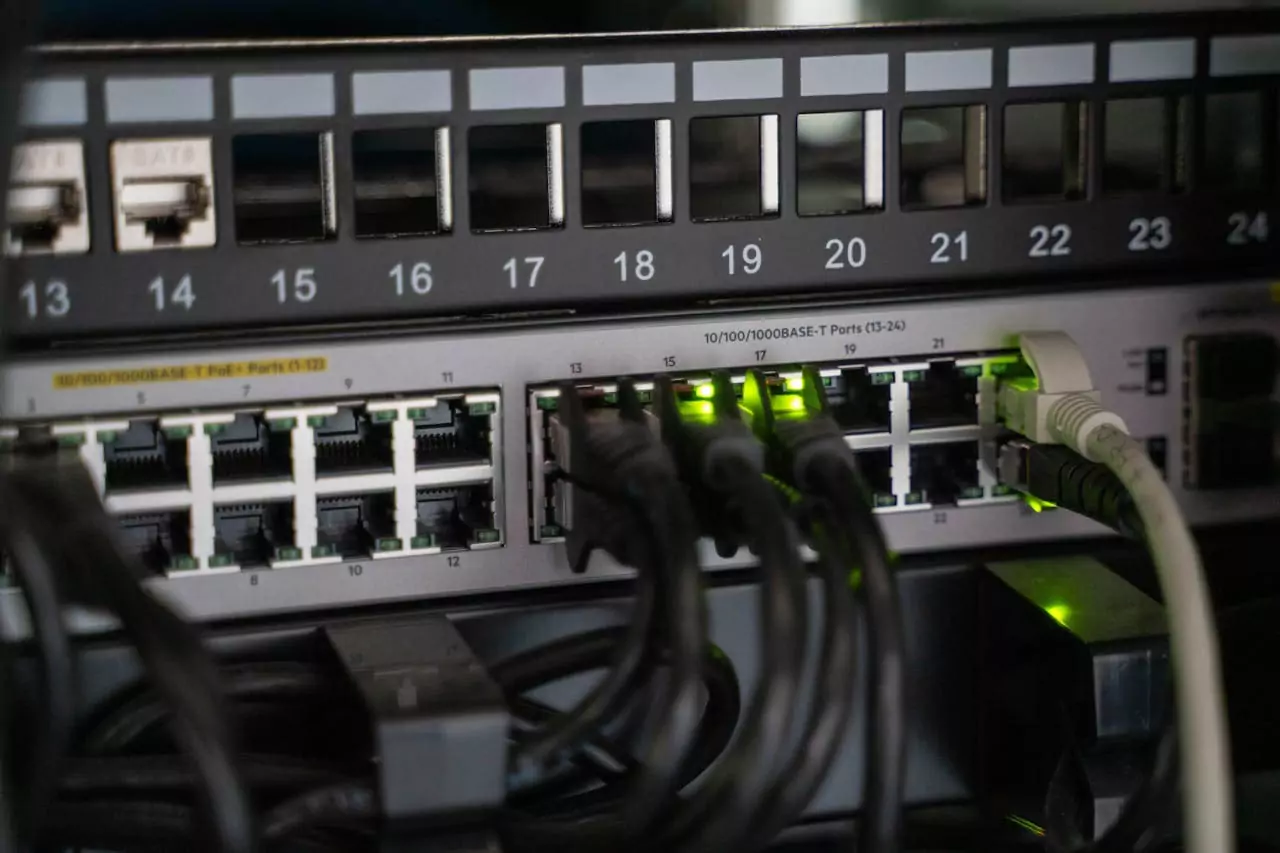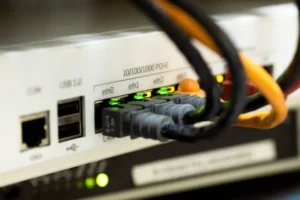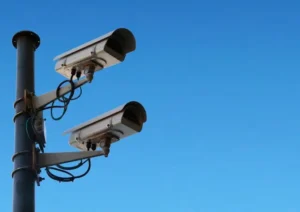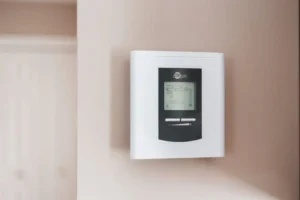Now Reading: Washer Dryer Combo vs Separate Units: What to Choose
- 01
Washer Dryer Combo vs Separate Units: What to Choose
- Home
- Home Appliances
- Laundry & Cleaning
- Washer Dryer Combo vs Separate Units: What to Choose
Washer Dryer Combo vs Separate Units: What to Choose
![]() Anne MaddisonLaundry & Cleaning, Home AppliancesAugust 2, 202598 Views
Anne MaddisonLaundry & Cleaning, Home AppliancesAugust 2, 202598 Views

Doing laundry might not be the most exciting part of your day, but having the right machines can make it a lot easier. If you’re thinking about buying a washer and dryer, you’ve probably come across two main options. One is the washer dryer combo, which washes and dries your clothes in a single machine. The other is the traditional setup with two separate machines, one for washing and one for drying.
Both options can clean your clothes, but they work differently and come with their own pros and cons. Some people prefer combos because they take up less space and are easier to use. Others like separate units because they can handle more laundry and finish jobs faster.
This guide will help you understand how washer dryer combos and separate units work, how they compare, and which one might be better for your home. Whether you live in a small apartment or a large house, this blog will break it down in simple terms so you can make the best choice for your lifestyle, space, and budget.
Let’s start by learning what each option is and how it works.
What Is a Washer Dryer Combo?
A washer dryer combo is one machine that does two jobs. It can wash your clothes and then dry them in the same drum. You don’t have to move your clothes from one machine to another. You just load your laundry, add detergent, pick a cycle, and let it do the work from start to finish.
Washer dryer combos are different from traditional machines because they use one tub to handle both washing and drying. Most of them use a ventless drying system, which means they don’t need an outside vent like regular dryers. Instead, they use special technology to pull moisture out of your clothes and drain it away as water.
Some key features include multiple wash and dry settings, delay start timers, and sensors that detect how damp your clothes are. Many models also let you choose whether to wash only, dry only, or do both in one cycle. This can be helpful if you want more control over your laundry.
Washer dryer combos are usually smaller than separate machines. Most are between 24 to 27 inches wide, making them a great fit for tight spaces. Because of their size and convenience, they are popular in small apartments, tiny homes, and recreational vehicles (RVs) where there isn’t room for two separate machines.
This type of appliance is all about saving space and making laundry easier for people with limited room.


| Pros of Washer Dryer Combo | |
| Space-saving | Washer dryer combos take up only one spot instead of two. This makes them perfect for apartments, condos, and small homes where space is limited. You don’t need a full laundry room to use one. |
| All-in-one convenience | You can wash and dry your clothes in the same machine. There’s no need to move wet clothes from one unit to another. This makes the laundry process easier, especially for people who are busy or live alone. |
| Set-it-and-forget-it cycles | Many combos let you run a full wash and dry cycle without stopping. You can start it in the morning and come back later to clean, dry clothes. It’s helpful for people who don’t want to wait around for laundry to finish. |
| Easier for small households | If you don’t do a lot of laundry, a combo unit might be all you need. It works well for singles, couples, or small families who don’t mind smaller loads. |
| Cons of Washer Dryer Combo | |
| Smaller load capacity | Washer dryer combos usually can’t handle as many clothes as separate machines. You may need to do more loads if you have a lot of laundry. This can be a problem for bigger families. |
| Longer dry times | Drying in a combo unit often takes more time than in a regular dryer. Some loads can take several hours to wash and dry completely. |
| Less energy-efficient in some models | Some older or lower-end combo units use more water and power than separate machines. Even though they save space, they might raise your utility bills over time. |
| May not dry clothes fully | Some users find that clothes come out slightly damp, especially towels or heavier fabrics. You may have to hang items to finish drying or run another cycle. |
What Are Separate Washer and Dryer Units?
Separate washer and dryer units are two different machines. One washes your clothes. The other dries them. After the washer finishes, you move your laundry into the dryer to finish the job. This setup is the traditional way many people do laundry at home.
Each machine has a specific job, so they’re built to do that job well. Washing machines usually come with features like different wash cycles, water temperature settings, and spin speeds. Dryers offer things like heat levels, timed drying, and sensor drying, which can stop the cycle when your clothes are dry.
Because they’re separate, you have more flexibility. You can wash one load while drying another. This saves time, especially if you do a lot of laundry each week. These machines also come in larger sizes, which means they can handle more clothes per load. This is helpful for big families or anyone who wants to do fewer loads overall.
Separate washer and dryer units are usually placed side by side or stacked on top of each other if space allows. They do need more room than a combo unit, but they’re commonly found in houses with dedicated laundry rooms or extra storage space. People who have the space often choose this setup for its speed, power, and larger capacity.



| Pros of Separate Units | |
| Larger capacity | Separate washers and dryers usually have bigger drums. This means you can clean more clothes at once, which is great for families or people who do large loads. |
| Faster wash and dry cycles | Since each machine does one job, they’re built to do it efficiently. Washing and drying times are often shorter compared to combo units. This saves time when doing multiple loads. |
| More efficient drying performance | Standalone dryers are usually more powerful than combo units. They remove moisture more quickly and dry clothes more thoroughly, even for heavy fabrics like towels and blankets. |
| Can do multiple loads at once | While one load is drying, you can start a second load in the washer. This helps you get through several loads in less time, especially useful during busy laundry days. |
| Cons of Separate Units | |
| Takes up more space | You’ll need room for two machines. That might be a challenge in small homes or apartments. These setups usually work best in homes with a laundry room or extra space. |
| Higher upfront cost | Buying two separate machines often costs more than a single combo unit. You may also need to spend more on delivery, setup, and installation. |
| Needs two hookups | Separate units usually need both a water line for the washer and either a vent or a 220-volt outlet for the dryer. If your space isn’t already set up for this, installation could be tricky or more expensive. |
Key Factors to Consider Before Choosing
Before you decide between a washer dryer combo and separate units, it’s important to think about your home, your needs, and your habits. Here are some key things to consider that can help you make the best choice.
Available space
If you live in a small apartment, condo, or RV, space is limited. A combo unit takes up less room and doesn’t need a separate dryer space or large hookups. But if you live in a house with a laundry room or extra storage, you might have room for two separate machines.
Family size and laundry frequency
How much laundry you do each week makes a big difference. If you live alone or with one other person, a combo unit might be enough. But if you have a family or do laundry often, separate units will handle bigger loads and work faster. You’ll get more done in less time.
Budget (short-term vs. long-term)
Washer dryer combos usually cost less upfront. But they may not last as long or work as efficiently over time. Separate units cost more at the start but often give better performance and can last longer. Think about what you can afford now and what will cost more in the long run.
Energy and water efficiency
Some combo machines use more water and power, especially during the drying cycle. Newer separate units are often more efficient and can help lower utility bills. Look for the ENERGY STAR label, which means the model uses less energy and water and may include features like moisture sensors or heat pump technology to save even more.
Maintenance and repair
A combo unit has more moving parts inside one machine, which means repairs can be more complicated. If something breaks, you lose both your washer and dryer at once. With separate units, if one breaks, you can still use the other.
Venting requirements
Most dryers need to release hot air outside through a vent. This can be a problem in small spaces or apartments. Many combos are ventless and drain water instead, making them easier to install in places without dryer vents.
Who Should Get a Washer Dryer Combo?
Washer dryer combos are a great option for people who need to save space or don’t do a lot of laundry. If you live in a small apartment, studio, condo, or even an RV, this type of machine can fit into tight spaces where separate machines wouldn’t work. Many combos are compact enough to fit under a counter or inside a closet.
These machines also work well for individuals or couples who only need to do a few loads of laundry each week. Since the load size is smaller and drying takes longer, they’re best for lighter use. If you only wash a few outfits at a time, a combo unit can handle that without any problem.
Washer dryer combos are also a smart pick for renters or people who move often. Because they take up less space and usually don’t need a vent, they’re easier to install in different types of homes. You can even take them with you when you move, which makes them more flexible for short-term living situations. If your main goals are saving space and keeping things simple, a washer dryer combo is worth considering.
Who Should Get Separate Units?
Separate washer and dryer units are best for people who do a lot of laundry on a regular basis. If you have a family, kids, or just go through a lot of clothes each week, separate machines can help you keep up. Their larger capacity and faster cycles make it easier to get multiple loads done quickly.
They’re also a good fit for homes that have dedicated laundry rooms or extra space. Since these machines take up more room and may need special hookups, they work better in houses than in small apartments. You can place them side by side or stack them if needed, but they still require more space than a combo unit.
Separate machines also offer better performance and more control. You can choose the best settings for each load and even run a wash and dry cycle at the same time. This gives you flexibility and saves time, especially on busy days. If you want faster results, higher capacity, and long-term reliability, separate units are usually the better choice.
If you’re leaning toward getting two machines, here’s a helpful guide on how to stack washer and dryer properly and decide the best setup for your space.
Buying Tip: Measure Your Space Before You Buy
Before you buy a washer dryer combo or separate units, it’s important to know exactly how much space you have. These machines come in different sizes, and a poor fit can lead to installation problems or frustration later on.
Start by measuring the width, depth, and height of the area where you plan to place the machine. Make sure to leave a few extra inches for hoses, cords, and air circulation.
If you’re getting separate units, remember that many models are stackable, which can help save space in tighter laundry areas. You’ll need to check if the washer and dryer are designed to stack and whether you have enough vertical clearance. Stacking kits may be required to secure them safely.
Also, make sure your home has the right hookups for the type of machine you’re buying. If not, you may need to hire a professional to install or upgrade them.
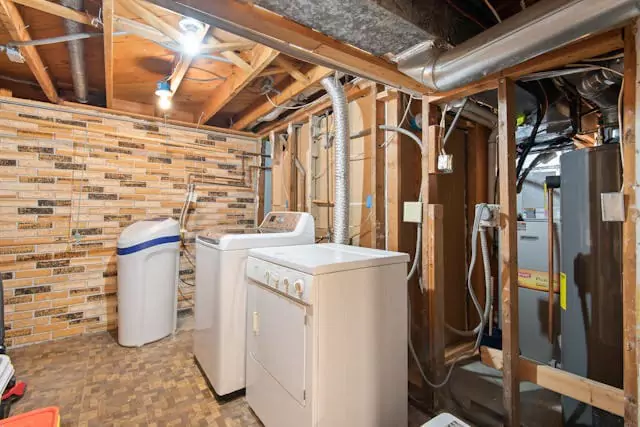
What’s a hookup?
A hookup is the connection your machine needs to work. Washers usually need access to a water supply line and a drain to get rid of used water. Dryers often need a special electrical outlet (like a 240-volt outlet) and sometimes a vent to release hot air outside.
Washer dryer combos typically need just a water line and a standard power outlet since most of them don’t require venting.
Final Verdict: Which One Is Better for You?
Both washer dryer combos and separate units can do the job, but they each have strengths and weaknesses. A combo unit is great if you’re short on space, don’t do a lot of laundry, or want something simple that takes up less room. It’s an all-in-one machine that works well for apartments, small households, and people who value convenience over speed or power.
On the other hand, separate washer and dryer units offer better performance. They clean and dry faster, can handle bigger loads, and let you run two cycles at once. They’re ideal for families, frequent laundry users, and anyone who has a laundry room or enough space for two machines.
In the end, the right choice comes down to your space, your budget, and how often you do laundry. If you want something compact and easy to use, go with a combo. If you have more room and need more power and speed, separate machines are likely the better option. Think about what matters most in your daily routine, and choose the setup that fits your lifestyle best.
Some of the links on this site are affiliate links. This means I may earn a small commission if you buy through them, at no extra cost to you. I only recommend products I truly believe in and think will add value to you.
Related Posts
Previous Post
Next Post
Previous Post
Next Post
Home AppliancesJuly 27, 2025
What Air Conditioner Size Do I Need?
Climate ControlJuly 28, 2025
Can Air Conditioner Make You Sick?
Climate ControlAugust 24, 2025
Are Home Air Conditioner Tune Ups Necessary
Climate ControlAugust 23, 2025
Can Air Conditioning at Home Trigger Asthma?
- 03
Climate ControlJuly 27, 2025
What Air Conditioner Size Do I Need?
- 04
Climate ControlJuly 28, 2025
Can Air Conditioner Make You Sick?



